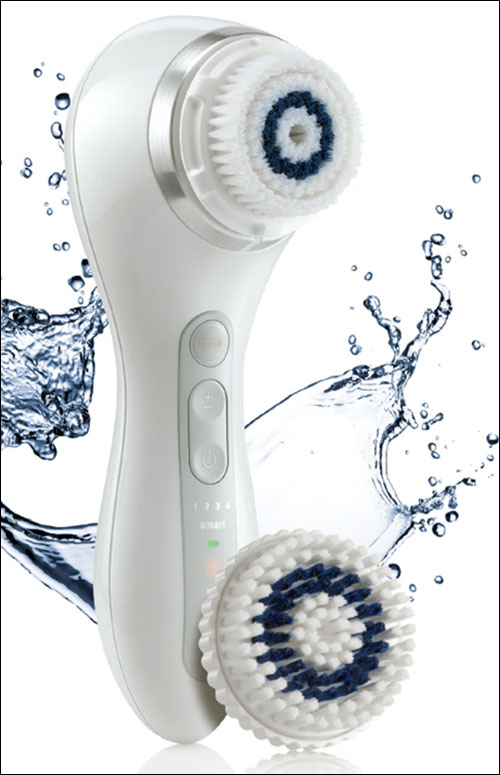Clarisonic, a division of L’Oreal, is employing high-frequency (HF) 13.56 MHz RFID technology to enable its motorized Smart Profile skin-cleansing device to communicate with a brush head installed in the unit, and to determine when that brush requires replacement. The company made the Smart Profile available to dermatologists and spa operators in May 2014, and began offering it through beauty products company Sephora in November, with full commercial availability commencing in January of this year.
The company offers a number of different motorized handheld units that are fitted with rotating brush heads, which work in conjunction with cleansers and other skin-care products sold by Clarisonic. Following each treatment, a user detaches and cleans the brush head, and then reattaches it once he or she is ready for the next use. A brush head is intended for use only a specific number of times; on average, Clarisonic advises, brushes should ideally be replaced every three months, though this does not always happen in the real world.

Clarisonic sought an automated solution because of its customers’ tendency to use a brush long past its recommended replacement date. This habit can not only prove unhygienic, but also result in a revenue loss for the company, since it sells the replacement brushes. The firm put together an advanced research group in 2012 and began testing possible solutions.
To automatically track how many times a brush head is used, and to then alert the consumer, the company required a non-contact system that could tolerate the water to which the brushes are exposed. With that in mind, says Scott Straka, Clarisonic’s director of electrical engineering, the firm opted for radio frequency identification. The company tested not only high-frequency RFID technology, but also low-frequency (LF) and ultrahigh-frequency (UHF), before ultimately selecting an HF solution.
The advantages of HF technology, according to the company, included the low cost of readers, as well as the ability to incorporate an appropriately sized reader antenna into the device’s handle and provide the best read range for the application. (UHF’s read range would have been too long and would capture other tags in the area, while LF would have been too short). Clarisonic considered HF RFID systems complying with the ISO 14443 standard—more typically used with Near Field Communication (NFC) readers, such as in smartphones—as well as others that complied with the ISO 15693 standard. Ultimately, the company opted for ISO 15693 because it offered a longer read range of the two standards, ensuring that a tag embedded in a brush could still be interrogated by a reader built into the motorized device, even if they were located several centimeters apart.
Clarisonic then hired a company to design and build the system into the handle and brush, and to create the necessary firmware stored in the handle’s electronic components. The firm opted to incorporate a reader made with an STMicroelectronics CR95 HF reader chip and integrated with a Renesas RL78-G13 processor that manages firmware and communicates with the reader using a universal asynchronous receiver/transmitter (UART) interface.
The tags were customized by Smartrac and Identiv, and utilize NXP Semiconductors‘ Icode SLIX 1K chip. Some of the customization included specialized adhesive and lamination material to ensure that the tag remains attached to the brush when exposed to the hostile environment of water, as well as various skin-cleaning formulations and brush-sanitizing compounds.
The tag is encoded not only with its unique ID number, but also with data regarding the type of brush head to which that tag is mated. The motorized device uses this information to ascertain which speeds and pulse settings to make available to the user. The tag’s memory also records the number of minutes that the brush has been used.
As the handle is turned off, the latest use event is written to the tag so that it can store that information for the next use. Once the brush reaches the end of its lifetime, based on the number of minutes it was used, the reader captures that data, prompting a light on the handheld device to be illuminated, thereby warning the user that the brush head needs to be replaced.
To date, Straka says, the company has received positive consumer feedback about the Smart Profile device. “Sales of RFID-enabled brushes will be monitored over 2015,” he states, “to better understand brush head replacement rates toward the ultimate target of replacement every three months.”
At this year’s RFID Journal LIVE! conference and exhibition, being held on Apr. 15-17, in San Diego, Calif., Straka will describe how his company is using RFID technology. During the event, the Smart Profile product will be a contender for this year’s RFID Journal Award for Best Use of RFID to Enhance a Product or Service (see Finalists Unveiled for Ninth Annual RFID Journal Awards).


